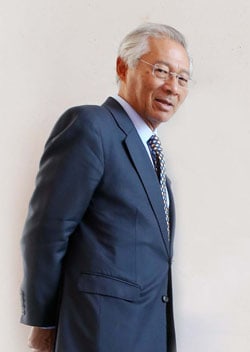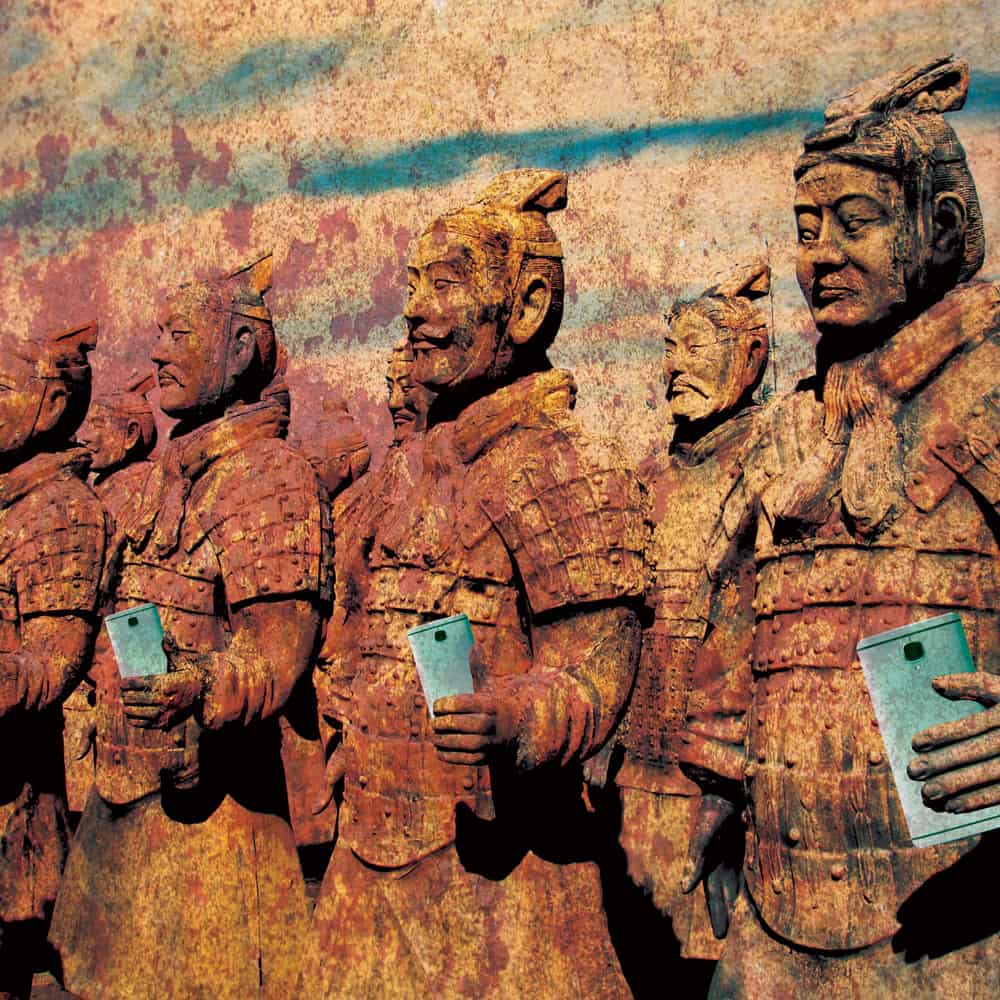George Yip talks to Deanna O’Connor about the phases of China’s industrial growth.
Q: In your recent book China’s Next Strategic Advantage: From Imitation to Innovation, you speak about three phases in the growth of China’s manufacturing and industrial growth. Tell me about this arc as you see it.
The Chinese economy started to liberalise from 1978. That’s now 38 years ago. The first phase was really just imitation; looking at foreign products – Western, Japanese, Korean – just to be able to make something because suddenly demand was growing in China, really from a standing start. It was zero in 1978 after 30 years of Marxism.
Then they started to move toward an adaptation phase where they started to develop their own products for the Chinese market. Some of them were original designs but very often they would take a Western design and then improve on it for Chinese conditions.
A good example is washing machines, where Haier, the leading major appliance company, started to make washing machines that had features that could wash crops as well as clothes, because in the rural districts the farmers were doing that. That’s a typical Chinese innovation.
Another innovation was Sany, the largest construction equipment company: there is such a wide variety of soil conditions across China, and so many different building projects that they have so many more product variants.
They told me that for each model in the west, while the west might have one or two products they might have six or seven: a crawler, a tractor, etc. But now they are reaching a third stage where they are doing some significant innovations of their own. It’s still not rocket-science innovation, it’s still not iPhone innovation – it’s very much incremental innovation, but they are making a lot of money from it, and that’s the important thing.
Q: China has always been a manufacturing hub. Do you think the rise of innovation will bring more services and technology into the mix?
They are starting to develop technology-based products. Huawei has become the world’s largest telecoms equipment and network company. They innovated with a single RAM which could operate 1G, 2G and 3G all in one system rather than in separate systems.
That’s real technology innovation, but the general China story is is that they have incremental innovation. A typical Chinese product may have twice the features for half the price of a Western product.
They would take a Western design and then improve on it for Chinese conditions
The thing to look out for now is aerial drones. They didn’t invent the aerial drone but they are going to do the next wave of innovation. It’s just the kind of engineered product where the innovation needs to take place next to the factory, things like making it a bit faster, a bit bigger, adding a few more features.
So the Chinese are going to do that. Or say in solar panels: they pioneered self-cleaning solar panels – not major innovation, but very important commercially. It’s that kind of thing.
Q: Will the scale of their manufacturing industry allow them to embrace innovation strategies with greater ease?
China has three things that I talk about. They have among the world’s best manufacturing capability; they now have scientific and engineering capability to absorb knowledge from anywhere in the world. A good example: they are about to launch a mid-size jet, going up against Boeing and Airbus.
Even the Japanese couldn’t do that. They need manufacturing capability, they need scientific capability, and they need a huge home market.
For example, because it’s a state-owned aircraft company, all the airlines in China – whether private or state-owned – have to buy from them. They already have 500 advance orders for them. So they’ll use the home market base as a way to leverage new products and innovation.
Q: How has the Chinese state played a part in promoting industry?
The state has played a huge role in building the infrastructure. So China now has great infrastructure. If you travel there, you look at the airports, the railways, it’s actually beyond the first world in terms of the infrastructure.
They’re also investing in the ecosystem in terms of universities, research institutes and aspects like that, so the state really helps. Then we’ve got this funny business system where some companies are state-owned but many are also private. I have to say that more of the innovations are coming from the private companies. The private companies are more innovative, more entrepreneurial, but benefiting from the infrastucture that the state has built.
Western companies are fearful of failures so Chinese companies are willing to throw products out more quickly
The next example of that is electric vehicles. My prediction is that China will lead the world in electric vehicles, because not only do they have a major electric vehicle manufacturer – BYD – but the Chinese government has now declared they are going to build electric charging stations from north to south.
So the government is going to solve the chicken-and-egg problem, which is much harder for a western government to do.
Q: Every coin has two sides. What do they not have, or what do you think may hold them back?
Their biggest obstacle is that their education system does not teach creativity, and they are well aware of this: the rote learning, the problem of having to spend so much time memorising the Chinese language, the hierarchical culture – that’s a major problem.
But again they are trying to fix that: the government is now supporting a major programme by a major American university, Duke, that is teaching Chinese academics how to teach in a more creative way.
Q: What influences and synergies have you seen developing between western and Chinese business and academia throughout your career?
China spent the last thirty-something years learning from the west and I just spent five years at the business school that was set up to bring western management education to China. Now China is reaching out; it’s making acquisitions. Chinese companies go in for bold experimentation.
They are much more bold now, and western companies have become over-cautious; they can learn to be more experimental, more pragmatic, more creative.
Western companies are fearful of failures so Chinese companies are willing to throw products out more quickly – if it fails carry on, move on. Of course, they’ve developed this mindset because the market grows much faster. It’s been growing at over 10%. Even now at 7% it’s still fast growth; a mistake doesn’t matter so much.
Q: For multinationals going into China, what do they need to develop?
They would perhaps have to set up an R&D centre in China to adapt their products for China. Even BMW has a design centre in China that focuses on in-car entertainment systems – the Chinese don’t want the ultimate driving machine, they want the ultimate mobile living room.
They sit in the back seat, they want more entertainment and they also spend a lot more time in traffic jams. That’s the kind of adaptation a western company has to do.
Q: How would you advise western companies to prepare their people for working in and with China?

George Yip
Western companies are very process-oriented. You have to learn to manage with less process. The Chinese environment is less process-oriented. China is actually a good place to develop mixed teams and develop executives who can manage multiple cultures.
Chinese companies have been very accepting of foreigners – particularly if you’re a western multinational, you can send one of your executives and they can learn to manage there. They say: “Shanghai, Shanghai, if you can manage there, you can manage anywhere!”
About the author: George Yip is professor of Management and co-director, Centre on China Innovation, China Europe International Business School. Business & Finance spoke with George Yip at the IMI National Management Conference 2016.







